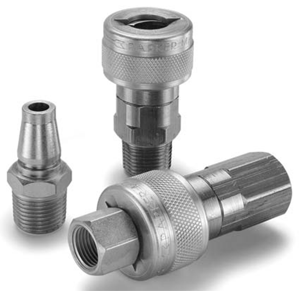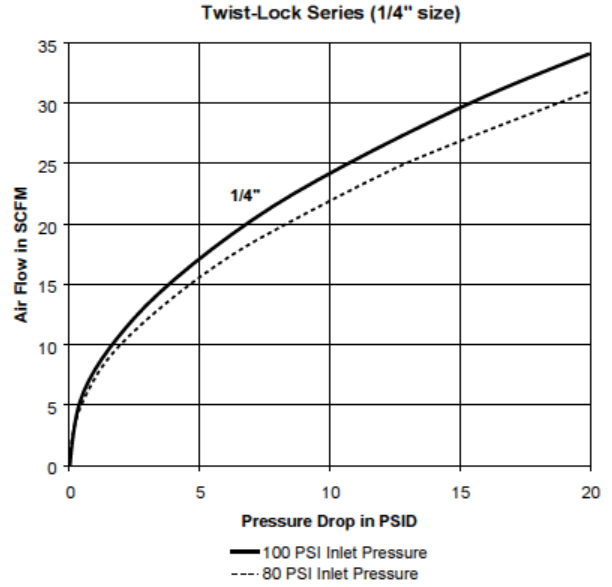Parker Twist-Lock Series Pneumatic Couplings | General Purpose - Push-to-Connect
 |
Parker Twist-Lock Series Push-to-Connect design is meant for easy, one handed operation.
Twist-Lock Series QC Dimensions & Specifications:Choose another GP - Push-To-Connect QC Choose another Pneumatic QC Go back to Product Overview |
Parker Twist-Lock series has a variety of port configurations that are available to meet specific needs.
Twist-Lock series has zinc bodies with Chromium-6 Free plated steel sleeves and nipples. It is designed to protect against accidental uncoupling.
Common applications: compressed air, water, grease, paint, limited vacuum and limited gases.
Parker Twist-Lock Series Couplings Specifications & Performance
| Body Size (in.) | 1/4 | 1/2 |
| Rated Pressure (PSI) | 300 | 300 |
| Temperature Range (Nitrile seal) | -40° F to +250° F. | |
| Locking Device | CAM | |
| Vacuum Service | Not Recommended | |

Parker General Purpose Pneumatic Coupling Repair Kits
The repair kits below are for Parker 10, 20, 30, 50, 70, & TL Series Pneumatic Couplings.
| Body Size |
Seal Material |
Part No. |
| 1/4 | Nitrile | 21K |
| 1/4 | Ethylene Propylene | 21KW |
| 1/4 | Fluorocarbon | 21KY |
| 3/8 | Nitrile | 14K |
| 3/8 | Ethylene Propylene | 14KW |
| 3/8 | Fluorocarbon | 14KY |
| 1/2 | Nitrile | 16K |
| 1/2 | Ethylene Propylene | 16KW |
| 1/2 | Fluorocarbon | 16KY |
| 3/4 | Nitrile | 38K |
| 3/4 | Ethylene Propylene | 38KW |
| 3/4 | Fluorocarbon | 38KY |
Orders & Quotes
| PLACE ORDER |
| REQUEST QUOTE |
| Fluid Power Product Questions |
When ordering quick couplers, consider the following:
- Functional requirements of the coupling
- Maximum working pressure of the application
- Coupler seal & body material compatibility with the system’s fluid
- Is the application static or dynamic?
- Size of coupler & hose
- Maximum allowable pressure drop
- Requirement to connect & disconnect under pressure
- Media temperature
- Ambient temperature
- End configuration requirements
- Need for industrial interchange QC
- Effects of air inclusion & fluid loss
